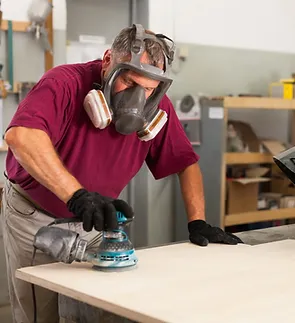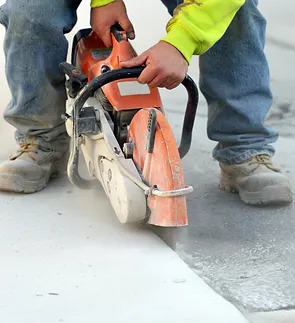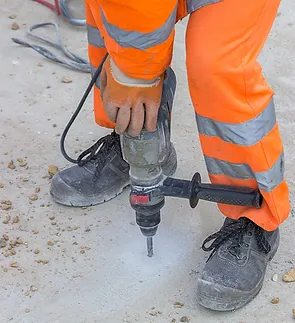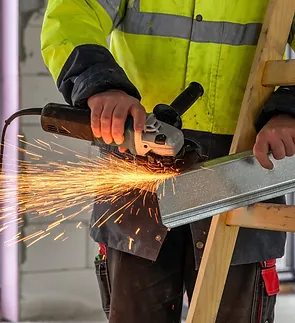Hazardous Materials Created by Cutting, Grinding, Sanding or Drilling of Materials
Cutting various materials can generate a range of hazardous materials, including:
- Silica Dust: From cutting concrete, stone, brick, and other materials containing crystalline silica.
- Asbestos Fibers: Released from cutting older materials that contain asbestos, commonly found in construction products like insulation, tiles, and cement products.
- Wood Dust: Produced from cutting wood, which can be particularly hazardous if the wood is treated with chemicals or preservatives.
- Metal Shavings and Dust: Including potentially toxic metals like lead, cadmium, nickel, and chromium from cutting metal surfaces.
- Fiberglass Dust: From cutting fiberglass materials used in construction, insulation, and certain industrial products.
- Paint Dust: Including lead-based paint dust from cutting painted surfaces.
- Plastic and Resin Dust: From cutting plastic materials or composites, which can release hazardous chemicals and particulates.
Inhalation of asbestos fibers can lead to severe health issues, including asbestosis, lung cancer, and mesothelioma. These diseases often develop after prolonged exposure to high levels of asbestos fibers, with symptoms typically appearing 20 to 30 years after initial exposure.
The risk is particularly high for workers involved in demolition, renovation, or maintenance of older buildings, where asbestos materials are more likely to be present and damaged. Proper safety measures, including the use of licensed asbestos professionals and adherence to safety guidelines, are crucial to protecting workers from these potentially life-threatening health effects.
How to reduce the risk of exposure
We provide professional respiratory fit-testing services for building and construction companies to ensure the safety and health of their employees. Our fit-testing ensures that your workforce is equipped with properly fitted respirators, crucial for working in environments with hazardous substances like asbestos and silica dust.
Importance of Respiratory Protection
Construction workers often face exposure to silica dust, which can lead to serious health issues such as silicosis, lung cancer, and other respiratory diseases. Proper respiratory protection is essential to mitigate these risks. Our fit-testing services ensure that each respirator fits correctly, providing the necessary protection.
Compliance with Australian Regulations
In Australia, it is mandatory to comply with Work Health and Safety (WHS) regulations regarding respiratory protection. Employers are required to provide fit-testing for their employees to ensure respirators provide adequate protection against airborne contaminants, including silica dust. Our services help you stay compliant with these regulations.
Benefits of Our Fit-Testing Services
- Expertise: Our team consists of experienced professionals who understand the unique needs of the construction industry.
- Convenience: We offer on-site fit-testing to minimise disruption to your operations.
- Compliance: We ensure that your respiratory protection program meets all Australian WHS standards.
- Safety: Proper fit-testing significantly reduces the risk of respiratory issues among your workers.
Ensure the safety and health of your construction workers by providing them with properly fitted respiratory protection. Contact us today to schedule a fit-testing session.



